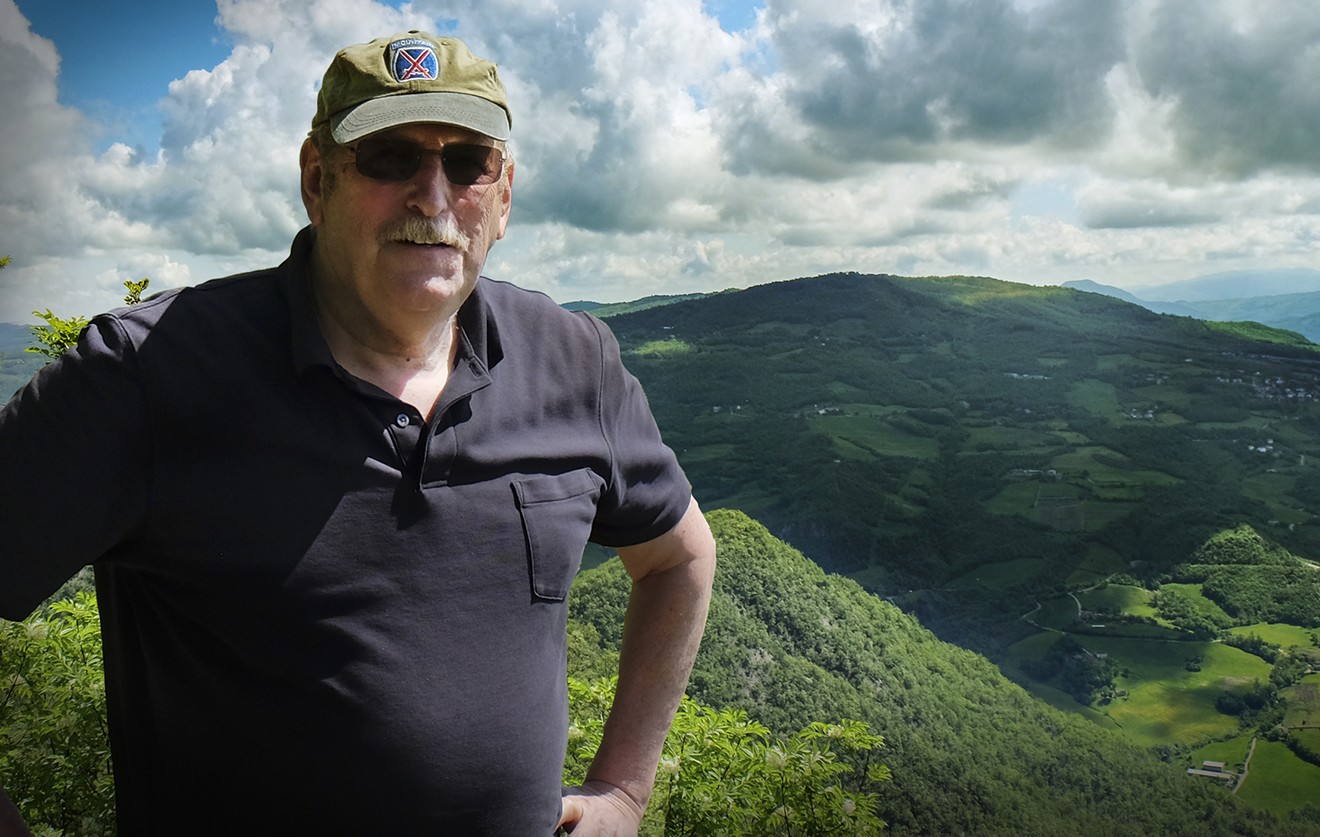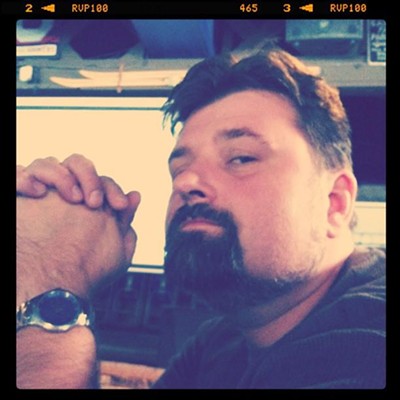Maurice Isserman on The Winter Army of Colorado
A nationally-recognized historian visits Colorado for Veterans Day to bring some World War II history home.
November 9, 2019

Maurice Isserman brings his story of World War II bravery alpine-style to Tattered Cover for Veterans Day.
Houghton Mifflin
[
{
"name": "Air - MediumRectangle - Inline Content - Mobile Display Size",
"component": "12017618",
"insertPoint": "2",
"requiredCountToDisplay": "2"
},{
"name": "Editor Picks",
"component": "17242653",
"insertPoint": "4",
"requiredCountToDisplay": "1"
},{
"name": "Inline Links",
"component": "18838239",
"insertPoint": "8th",
"startingPoint": 8,
"requiredCountToDisplay": "7",
"maxInsertions": 25
},{
"name": "Air - MediumRectangle - Combo - Inline Content",
"component": "17261320",
"insertPoint": "8th",
"startingPoint": 8,
"requiredCountToDisplay": "7",
"maxInsertions": 25
},{
"name": "Inline Links",
"component": "18838239",
"insertPoint": "8th",
"startingPoint": 12,
"requiredCountToDisplay": "11",
"maxInsertions": 25
},{
"name": "Air - Leaderboard Tower - Combo - Inline Content",
"component": "17261321",
"insertPoint": "8th",
"startingPoint": 12,
"requiredCountToDisplay": "11",
"maxInsertions": 25
}
]
Maurice Isserman has been writing about twentieth-century history for decades. As a longtime professor of history at New York state’s Hamilton College, he’s penned books on topics ranging from the politics of the 1960s to Communism and the “New Left” to the legacy of legendary newsman Walter Cronkite. Now he turns his sights on a subject near and dear to Colorado: the 10th Mountain Division of World War II that helped inspire and develop skiing as we know and love it today.
Isserman is, appropriately enough, visiting the Tattered Cover on Veterans Day, Monday, November 11, to read from and sign his new book on the 10th Mountain Division, The Winter Army: The World War II Odyssey of the 10th Mountain Division, America's Elite Alpine Warriors. We caught up with him to talk a little history, a bit about what drew him to the subject, and why anyone who checks the reports for levels of fresh powder owes a debt to this group of World War II heroes.
Westword: You'll be talking about your new book at the Tattered Cover on Veterans Day. That's not only perfect timing, but it's also got to be rewarding to be able to honor those that served not only through the book, but also in person. What do you have planned for the event?
Maurice Isserman: I’ll be presenting an overview of the US Army’s 10th Mountain Division’s history in World War II and, hopefully, signing some books. It’s great that the Tattered Cover was able to organize the event for Veterans Day. We’re also coming up to the 75th anniversary of the last great battles in the European theater in the Second World War, including the 10th’s victories on Riva Ridge and Mount Belvedere in Italy’s Northern Apennine mountains in February 1945. There aren’t too many veterans of those battles left, but some are still with us to observe the anniversary, including some local vets I had the honor of meeting on previous visits. I’m particularly happy to be kicking off the book tour at the Tattered Cover, since the bookstore is located only a few blocks from the Denver Public Library, home to the 10th Mountain Division’s archives, where in three separate trips between 2016 and 2017 I did the bulk of the research for The Winter Army.
The 10th Mountain Division was born here in Colorado; can you give us just a short version of how that important group of elite soldiers came about, and why?
In 1940, Charles “Minnie” Dole, a Connecticut insurance executive, avid amateur skier and founder of the National Ski Patrol System, began lobbying the military to create an elite division of specially trained troops capable of fighting in winter on mountainous terrain. He saw, correctly, that the U.S. would soon join the war against the Nazis in Europe, and worried that the American army had no units equivalent to the Wehrmacht’s highly trained alpine divisions. The U.S. Army had never fought a battle on a snowy mountain, and its leaders were skeptical about the need for such troops.
What changed their minds?
Dole and others persisted. In November 1941, just a few weeks before Pearl Harbor, the 87th Mountain Infantry regiment, the beginning of what became the 10th Mountain Division, was activated at Fort Lewis in Washington state. That first winter they trained on Mount Rainier, before moving to the newly constructed Camp Hale, in the Eagle Valley near Leadville. At 9,200 feet, Camp Hale was the highest military camp in the United States, and the soldiers went on maneuvers at over 13,000 feet in the surrounding mountains, often in blizzard conditions. The division was made up of volunteers, many of whom before the war had been skiers or mountaineers, forest rangers or guides. The men of the 10th perfected their skiing with some of the finest ski instructors in the world, including European refugees like Torger Tokle, a Norwegian who held the world ski-jumping record when he enlisted in the unit in 1942. By the time they boarded troop ships for Italy in December 1944, they were superbly fit, skilled in winter survival techniques, and with a sense of unit pride comparable to other elite volunteer outfits, like the Airborne and the Rangers.
And how did you come to write about it? What drew you to this particular story from World War II?
I first learned about the 10th’s role in World War II from a colleague at Hamilton College, a geologist named Donald Potter, who served as a second lieutenant in Italy with H Company of the 85th Mountain Infantry Regiment. He told wonderful stories about his training at Camp Hale, and then skiing in the French Alps – including a run from the summit of Mont Blanc down to Chamonix — in the immediate aftermath of the war. He never talked, at least to me, about the actual fighting. It was only after his death in 2015, at age 91 — still skiing up until the end, by the way — that I learned he had been awarded a bronze star for heroism. So Don was one inspiration for the book, which is partly dedicated to his memory. And because the current 10th Mountain Division, activated in the 1980s, is based at Fort Drum, not far away from where I live in upstate New York, there’s a lot of interest locally in the division’s history — just as there is in Colorado.
You have a passion for Mountaineering. Where did that originate for you? Do you still get out above treeline now and then?
I grew up in Connecticut, where there are no mountains to speak of, but had the great good fortune of going to college in Oregon in the 1960s, where I encountered the Cascades. There I fell in love with climbing and mountains. I started writing about mountaineering about fifteen years ago — partially so I’d have the chance to meet and interview the heroes of my youth, like Charlie Houston, of K2 fame, who lived nearby in Burlington, Vermont, and Tom Hornbein, who with Willi Unsoeld made the first ascent of the West Ridge of Everest, who makes his home in Estes Park and who I will be seeing later in the week when I do a book event there. As for going above treeline, well, that’s more a matter of then than now, although I did go on a trek to the Annapurna region a few years back with a group of my Hamilton students who were studying the history of mountaineering in the Himalaya. After spending two weeks trying to keep up with a bunch of twenty-year-olds at altitude on rough trails, I spent the next six months recovering — but it was definitely worth it. The last time I was on a mountaintop was in May 2018, when I climbed Riva Ridge and Mount Belvedere as part of my research.
The ski industry — indeed, much of Colorado's tourism — was directly impacted by the 10th Mountain Division's work, wasn't it? What was the connection there, and the ultimate effect?
Camp Hale was built not far from the mining community of Aspen, which had a kind of rudimentary ski industry before the war. One of the 10th’s ski instructors, an Austrian refugee named Friedl Pfeiffer, visited Aspen in 1943, instantly recognized its potential, and returned there soon after the war to help create one of the world’s great ski resorts. A decade or so later, another 10th veteran, Pete Seibert, saw the potential in an untouched stretch of the Rockies, also close by the Eagle Valley, and he set about developing Vail, where the longest ski run is named “Riva Ridge.” All told, something like 2,000 10th veterans found post-war careers in the newly emerging winter recreation industry.
Do you have a favorite spot in Colorado? Somewhere that feeds the mountaineer spirit in you?
Lake Dorothy, at the base of Mount Neva in the Indian Peaks Wilderness, which I hiked to with my then-teenaged son in 2010, taking time off from a research visit to the American Alpine Club library in Golden. Also, speaking of Golden, the American Mountaineering Museum, where I’ll also be speaking later in the week, where they have such treasures as the ice-ax Pete Schoening used in “the belay” that saved, among others, Charlie Houston’s life on K2 in 1953. And the New Moon Bakery and Cafe in Nederland, where I would stop in for coffee and a muffin, en route to or on the way back from various mountain adventures — feeding the spirit and the body.
Maurice Isserman will read from and sign copies of his new book, The Winter Army, at 7 p.m. on Veterans Day, Monday, November 11, at the Tattered Cover Colfax, 2526 East Colfax Avenue.

KEEP WESTWORD FREE...
Since we started Westword, it has been defined as the free, independent voice of Denver, and we'd like to keep it that way. Your membership allows us to continue offering readers access to our incisive coverage of local news, food, and culture with no paywalls.
You can support us by joining as a member for as little as $1.
Teague Bohlen is a writer, novelist and professor at the University of Colorado Denver. His first novel, The Pull of the Earth, won the Colorado Book Award for Literary Fiction in 2007; his textbook The Snarktastic Guide to College Success came out in 2014. His new collection of flash fiction, Flatland, is available now.
Contact:
Teague Bohlen


Newsletter Sign Up
Enter your name, zip code, and email
I agree to the Terms of Service and
Privacy Policy
Sign up for our newsletters
Get the latest music, news, free stuff and more!
Trending
Use of this website constitutes acceptance of our
terms of use,
our cookies policy, and our
privacy policy
Westword may earn a portion of sales from products & services purchased through links on our site from our
affiliate partners.
©2024
Denver Westword, LLC. All rights reserved.
Do Not Sell or Share My Information
Do Not Sell or Share My Information









